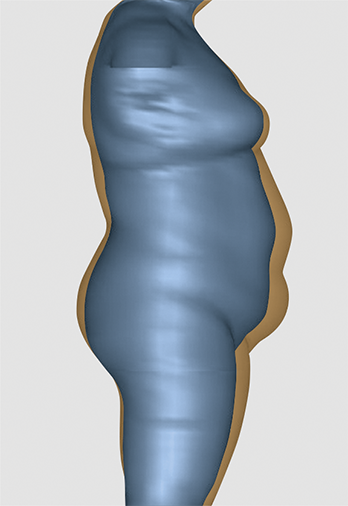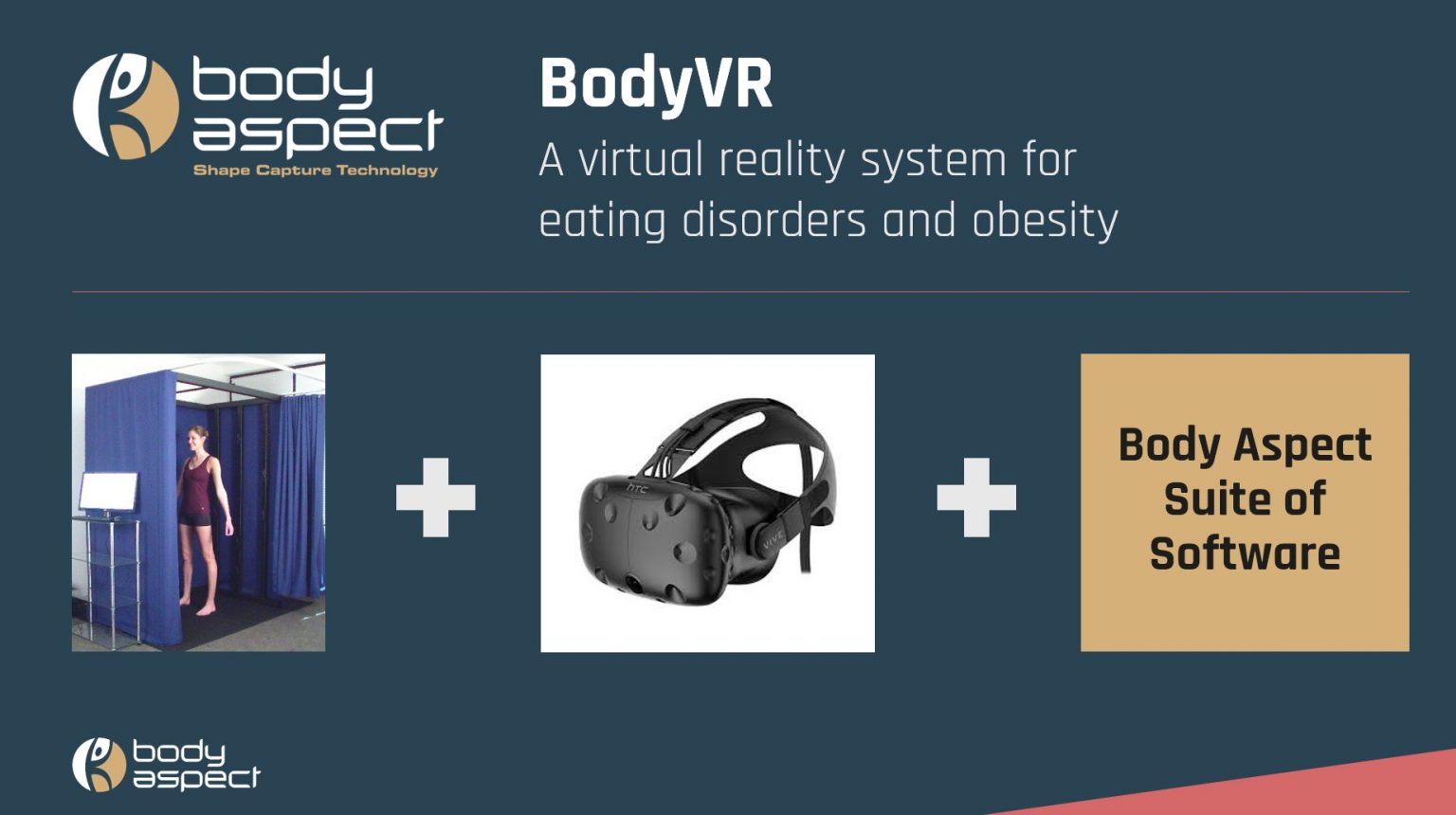Research into Eating Disorders and Obesity
Eating disorders and obesity are both disturbances associated with eating behaviour, weight and body image and a growing volume of research supports the consideration of 3D body imaging for these issues. Body Aspect has conducted studies to assess how 3D image assessment can support weight management, and is currently evaluating how the technology can best be applied to weight management and eating disorders.
Image assessment software allows a person to create a 3D image of their perceived body and compare it to their body scan. In this way, body image distortion can be illustrated and quantified. People also benefit from seeing their progress in 3D rather than through weight alone because they can see exactly how their body size and shape is changing.

